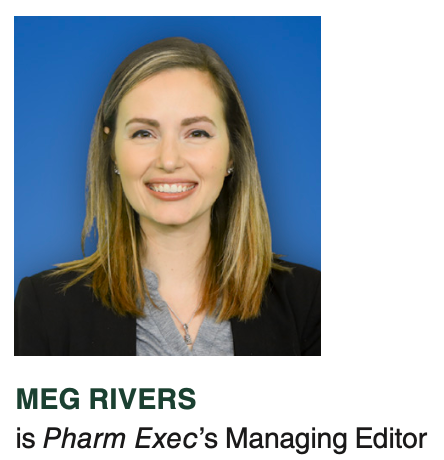Key Opinions Abound
While KOLs have been present in healthcare marketing for some time, DOLs are now emerging.

Each issue of Pharmaceutical Executive holds fast to a theme of importance to the pharma industry—one that the sector needs to be aware of now. Naturally, our team works hard to keep our fingers on the pulse of the latest occurrences and most relevant topics. But I can’t help but find it fascinating when the tide of change influences the direction of topics discussed within an issue.
This particular issue of Pharm Exec hones in on key opinion leaders (KOLs) and digital opinion leaders (DOLs), specifically in two feature articles and in our Back Page column.
KOLs are nothing new to healthcare marketing—they are resources pharma has turned to for years. But DOLs have emerged in recent years as online platforms have become more relevant. In the first article, Mike Hollan, editor, explains that because KOLs were inaccessible during the pandemic, DOLs became the “go-to.” Personally, I see DOLs as the “pharma influencer” in the digital age, similar to how there are influencers in every topic/niche (and, essentially, in every industry) across social media.
How to talk to each group of opinion leaders differs. The information they need and the method of communication vary. For example, DOLs may be more technologically savvy than KOLs, and they may not be HCPs. In addition, sometimes KOLs (physicians) are also DOLs in that they have a social media presence online. But many KOLs do not have such presence. Definitely check out Hollan’s article for a deep dive into what KOLs and DOLs are, how they differ, and ways to communicate with each.
In our Back Page piece, Read Roberts, director of KOL data solutions for PRECISIONscientia, explains that the industry is struggling to sort out whether they should target KOLs or DOLs. As is the case with any company, there are only so many resources as well as time in the day. It simply isn’t feasible for a pharma company to touch base with every single KOL and DOL within a therapeutic area. As such, who should be prioritized and why? Roberts digs into this question in the column. One advantage of DOLs is the sheer quantity of people within their social network.
Deepak Patil, senior director of medical strategy for Aktana, explores in his contributed feature that accompanies Holland’s piece about what is means to be “KOL-centric” and how KOLs are being “slammed” with information from all sides. To connect with these opinion leaders, Patil reveals what pharma needs to know and how to disseminate it in such a way that it’s easily and quickly digestible. Gone are the days when the same messaging works for everyone. Personalize, personalize, personalize. Equally important, keep track of who has been contacted by your company so that KOLs aren’t contacted more than once.
One can only hope that the presence of KOLs and DOLs can help to limit the spread of misinformation while also empowering patients to take their health and treatments into their own hands.
Of course, there are many other great topics covered in this issue that we hope you find useful. Please don’t hesitate to reach out to the team with requested topics you’d like to see in the future. We can be reached at pharmexec@mjhlifesciences.com.
Meg Rivers is Pharm Exec’s managing editor and can be reached at mrivers@mjhlifesciences.com.

Addressing Disparities in Psoriasis Trials: Takeda's Strategies for Inclusivity in Clinical Research
April 14th 2025LaShell Robinson, Head of Global Feasibility and Trial Equity at Takeda, speaks about the company's strategies to engage patients in underrepresented populations in its phase III psoriasis trials.
Beyond the Prescription: Pharma's Role in Digital Health Conversations
April 1st 2025Join us for an insightful conversation with Jennifer Harakal, Head of Regulatory Affairs at Canopy Life Sciences, as we unpack the evolving intersection of social media and healthcare decisions. Discover how pharmaceutical companies can navigate regulatory challenges while meaningfully engaging with consumers in digital spaces. Jennifer shares expert strategies for responsible marketing, working with influencers, and creating educational content that bridges the gap between patients and healthcare providers. A must-listen for pharma marketers looking to build trust and compliance in today's social media landscape.

.png&w=3840&q=75)

.png&w=3840&q=75)



.png&w=3840&q=75)



.png&w=3840&q=75)





















